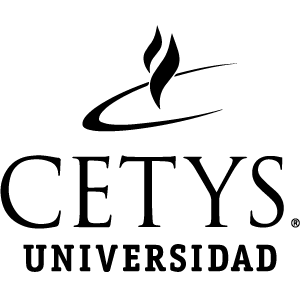https://repositorio.cetys.mx/handle/60000/127| Campo DC | Valor | Lengua/Idioma |
|---|---|---|
| dc.contributor.author | Mejía Ramírez, Manuel Alejandro | - |
| dc.contributor.other | Gutiérrez, Liseth | es_ES |
| dc.contributor.other | Castañeda, Carla | - |
| dc.contributor.other | Gutiérrez, Mitzi | - |
| dc.contributor.other | Sánchez, Denisse | - |
| dc.contributor.other | Hernández, Esteban | - |
| dc.coverage.spatial | Puerto Vallarta, Jalisco, México. | es_ES |
| dc.date.accessioned | 2019-10-28T19:35:33Z | - |
| dc.date.available | 2019-10-28T19:35:33Z | - |
| dc.date.issued | 2017-10-11 | - |
| dc.identifier.issn | 2007-9222 | - |
| dc.identifier.uri | https://repositorio.cetys.mx/handle/60000/127 | - |
| dc.description.abstract | El estudio presentado aquí es parte de un proyecto de investigación que busca identificar las características particulares de las ventajas cognitivas que los hablantes bilingües (L1: español, L2: inglés) sobre monolingües (español). Un primer experimento explora la existencia de estas ventajas atencionales; caracterizando dichas ventajas a partir de diferentes modelos teóricos sobre la atención: en primer término, el modelo de Red Atencional de Posner (Petersen y Posner, 2012), para posteriormente utilizar el modelo de atención de la carga perceptual (Lavie, Hirst, de Fockert, y Viding, 2004). Un segundo experimento explora la hipótesis de que la ventaja atencional sucede en personas cuyo cambio de código es más controlado. | es_ES |
| dc.language.iso | spa | es_ES |
| dc.rights | Atribución-NoComercial-CompartirIgual 2.5 México | * |
| dc.rights.uri | http://creativecommons.org/licenses/by-nc-sa/2.5/mx/ | * |
| dc.subject | Atención ejecutiva | es_ES |
| dc.subject | Redes atencionales | - |
| dc.subject | Bilingües | - |
| dc.subject | Cambio de código | - |
| dc.subject | Frontera | - |
| dc.title | Ventajas de bilingües en redes atencionales y su relación con el cambio de código | es_ES |
| dc.type | Presentation | es_ES |
| dc.description.reference | Bialystok, E. % Craik, F. (2008). Cognitive and Linguistic Processing in the Bilingual Mind. Recuperado de http://www. psychologicalscience.org/journals/cd/19_1_inpress/Bialystok_final.pdf?lan=ayajzqechdlh Bialystok, E. & Martin, M. (2004). Attention and inhibition in bilingual children: evidence from the dimensional change card sort task. Recuperado de http://onlinelibrary.wiley.com/doi/10.1111/j.1467-7687.2004.00351.x/full 1271 Memorias del Congreso Mexicano de Psicología octubre 2017 Fan, J., McCandliss, B. D., Sommer, T., Raz, A., & Posner, M. I. (2002). Testing the efficiency and independence of attentional networks. Journal of Cognitive Neuroscience, 14(3), 340–7. http://doi.org/10.1162/089892902317361886 Festman, J., Rodriguez-Fornells, A., & Münte, T. F. (2010). Individual differences in control of language interference in late bilinguals are mainly related to general executive abilities. Behavioral and Brain Functions, 6(1), 5. https://doi. org/10.1186/1744-9081-6-5 Krizman, J., Marian, V., Shook, A., Skoe, E & Kraus, N. (2012). Subcortical encoding of sound is enhanced in bilinguals and relates to executive function. Recuperado de http://www.pnas.org/content/109/20/7877.full.pdf Lavie, N., Hirst, A., de Fockert, J. W., & Viding, E. (2004). Load theory of selective attention and cognitive control. Journal of Experimental Psychology. General, 133(3), 339–54. http://doi.org/10.1037/0096-3445.133.3.339 Marian, V. & Shook, A. (2012). The Cognitive Benefits of Being Bilingual. Recuperado de http://dana.org/Cerebrum/2012/ The_Cognitive_Benefits_of_Being_Bilingual/ Petersen, S. E., & Posner, M. I. (2012). The Attention System of the Human Brain: 20 Years After. Annual Review of Neuroscience, 35(1), 73–89. http://doi.org/10.1146/annurev-neuro-062111-150525 Rodriguez-Fornells, A. Krämer, U. M., Lorenzo-Seva, U., Festman, J., & Münte, T. F. (2012). Self-assessment of individual differences in language switching. Frontiers in Psychology, 2, 1-15. doi: 10.3389/fpsyg.2011.00388 Yang, H., Yang, S., Ceci, S. & Wang, Q. (2005). Effects of Bilinguals’ Controlled-Attention on Working Memory and Recognition. Recuperado de http://www.lingref.com/isb/ 4/188ISB4.PDF | es_ES |
| dc.subject.sede | Campus Tijuana | es_ES |
| Aparece en las colecciones: | Ponencias | |
| Fichero | Descripción | Tamaño | Formato | |
|---|---|---|---|---|
| Ventajas de bilingues en redes atencionales y su relción con el cambio de código.pdf | 1.14 MB | Adobe PDF |  Visualizar/Abrir |
Este ítem está protegido por copyright original |
Este ítem está sujeto a una licencia Creative Commons Licencia Creative Commons


